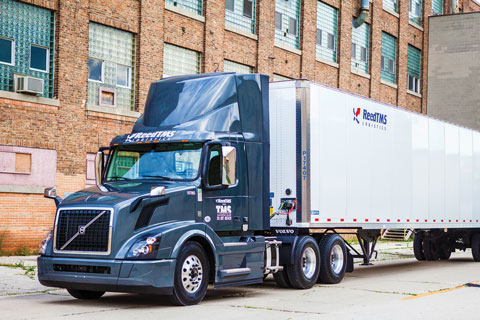3/1/2018
Prepare for the Worst, Hope for the Best
Matthew Castriotta

To fully understand the story that will play out in 2018, we need to begin where things started to diverge from the typical business patterns to land us where we are now. As much as transportation cost fluctuations are a function of supply side movement, the volatility is also attributable to the unexpected demand surges for freight movement in the United States. From a demand perspective, the unexpected externalities really started near the end of 2016 and almost seemed to happen overnight, mixed with the supply side movements. Here’s how we got here and what’s happening to nursery and ornamentals growers in response.
Demand externalities and factors
With a former businessman in the White House, consumer and business confidence is up to record levels. Hurricanes may have been the match that lit the fuse around last August and September, but increases in e-commerce and intense competition between retail giants also had a role to play in what gave momentum for record freight rate spikes.
Large retailers are in an intense battle leading to redundancies that have increased demand. Structurally unprepared shippers as large as automotive manufacturers are constantly battling assembly line shutdowns by massively over-paying for last-minute fixes. Produce shippers are pricing to move more and can pass on the transportation costs to shippers easier than industries like horticulture due to their relatively large diversity and ability to form a market. This caused the USDA Agricultural Marketing Service to run into problems with their rate report when they needed to add the ability to report five-figure freight rate numbers instead of the normal four.
Supply externality and factors
Many in the transportation world have warned of 2018 as the “year of the truck.” After years of intense legal and public wrangling, the ELD (electronic logging device) mandate (signed into law by the previous administration) went forward and hit its December 18, 2017 deadline. Commercial drivers must now function under this new law of the land with further enforcement happening in April.
With driver hours being reduced out of an already tight trucking capacity, trucking companies are now holding the market advantage. With self-driving trucks on the horizon, a 21-year-old age requirement for CDLs and a significant number of drivers approaching retirement age, the transportation industry is struggling to get professional drivers in their trucks and get new prospective job candidates interested in trucking as a career field.
The economics of pricing in this trucking market
Freight movement buyers, intermediaries and some trucking companies are now dealing with the biggest business challenge arising outside of the increased costs—that is, the variance in the rates.
With higher rates in the future, a diversity and variance in value-added manufactured products and competitive forces working against shippers, the rates are basically all over the place. Shifting priorities in government and commercial shippers are adding to the uncertainty. Typically, as with most industries, freight movement buyers would put together a budget for the following year based on benchmarked data. That is now made harder by this uncertainty and variance.
So now what?
Nursery and ornamental plants shippers, who service local or regional needs mainly, may not be in as bad of spot as it might seem, but that would really depend on where the operation is located during the spring season and what the requirements for hauling the freight might be.
If nursery/greenhouse shippers are having to compete with produce shippers for trucks during a corresponding produce season, they may have amplified challenges in securing trucking capacity. One phenomenon of this tight trucking market is that rates are going up, but rates hit higher highs the tighter the trucking capacity in each market. When trucks can pick and choose their freight, they typically prefer the lowest requirement freight movements. Some nursery and greenhouse freight movements are up to 25 stops, with drivers assisting in unloading to the tailgate.
In this market, the shippers that can cater to the trucker’s preferences will be rewarded with lower transportation costs. That being said, you might be wondering what the single most crucial factor in pricing is during this period … the answer is driver time.
Shippers that can stay open later for loading and receivers that can open earlier for receiving, shippers and receivers that load and unload quickly, and shippers and receivers with flexibility in their “must ship by” or “must receive by” days/times will have an advantage over shippers that don’t. There are countless other preferences, too, like behaviors toward drivers at the docks, parking policies, drop-trailer availabilities, etc.
Build and maintain your relationships with your current or new transportation providers, just as you would figure out the best way to grow your nursery stock and spring transplants—with care. If you sense this might be a challenging year, work closely with your truckers to figure out how to make their lives easier. This is the year to do it. GT
Matthew Castriotta is with ReedTMS Logistics. He can be reached at Mcastriotta@ReedTMS.com or (813) 369-6240.